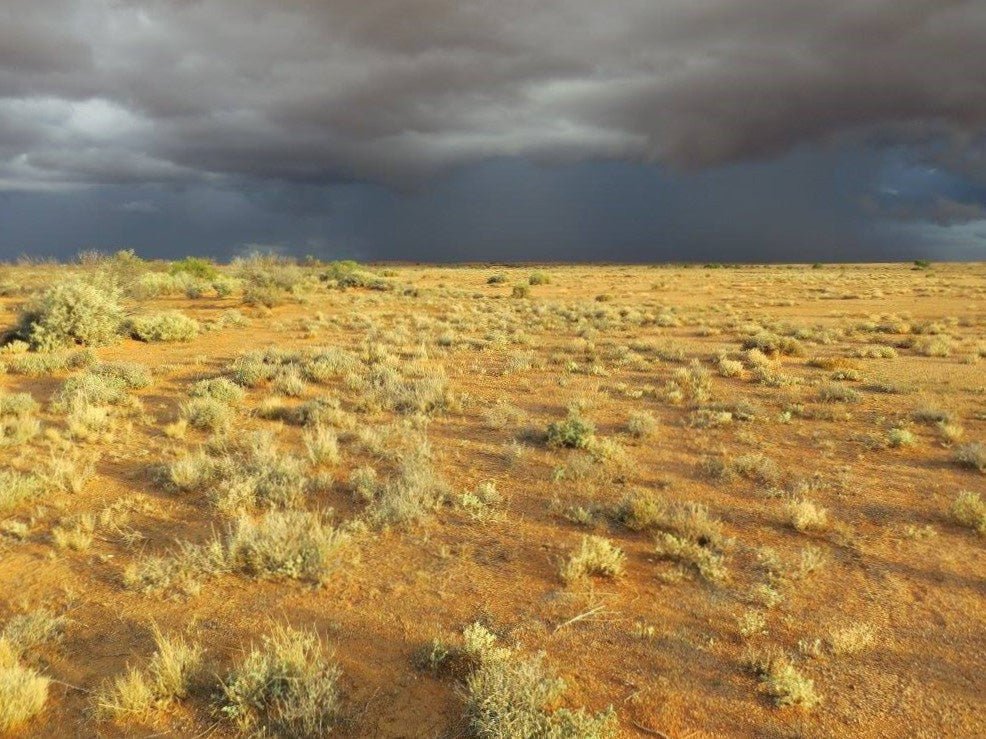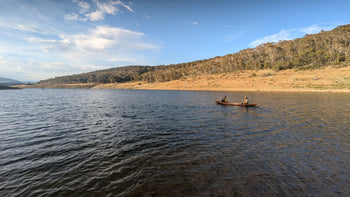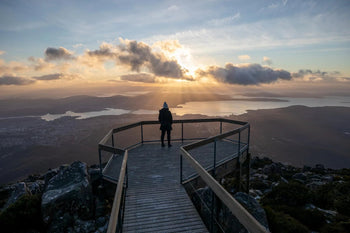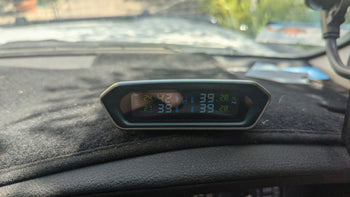

Check out our top tips for making the most of poor weather on your outdoor adventure holiday.
There’s nothing quite like the excitement of setting off on an outdoor adventure, whether you’re camping, caravanning or exploring Australia’s great outdoors in any way, at any time of year. The open road, fresh air and picturesque, quintessentially Australian landscapes await. But sometimes, Mother Nature doesn’t get the memo, and instead of clear blue skies you’re greeted with dark clouds and downpours.
However, poor weather doesn’t have to ruin your adventure. With the right preparation and mindset, bad weather can add a memorable twist to your trip. Here’s how to turn those weather lemons into lemonade and still enjoy the great outdoors, no matter what the weather forecast holds.
Preparation is key: pack for all conditions — rain, hail or shine
The first rule of thumb when venturing into the wild is to expect the unexpected. And we’re not just talking about the High Country here. Floods can (and do) occur in the Australian outback. In this land of extremes, the weather in any region of Australia can be as unpredictable as it is beautiful, so it pays to be prepared for any situation when it comes to severe weather. Heavy — and even torrential — rain may be welcome if you’re camping around Cloncurry in January, but very unwelcome if you’re camping in Cooma in July. Here's a guide to packing for all eventualities:
1. Layer up
- Base Layer: Moisture-wicking base layers (such as merino wool or synthetic materials) keep sweat away from your skin, helping you stay dry and warm.
- Mid Layer: A fleece or down jacket provides insulation. Choose lightweight, compressible options that are easy to stow away when not needed.
- Outer Layer: A waterproof, windproof shell is your best friend when the weather turns bad. Make sure your jacket is breathable to prevent condensation from building up inside.
2. Waterproof everything
- A rain cover for your backpack, a waterproof groundsheet for camping and water-resistant bags or dry sacks for storing your electronics, maps and other essentials can save you from a soggy disaster.

3. Extra warmth and comfort
- When travelling in Australia’s more southerly latitudes, at altitude or even in the desert, always pack extra socks, beanies and gloves. Wet feet can quickly dampen your spirits (pun intended), so having dry alternatives is crucial. A hot water bottle or heat packs can also help if the temperature drops unexpectedly. A high-quality sleeping bag is great; one with a sleeping bag liner is even better.
4. The right camping gear for wet weather
- A swag or quality tent (ideally a four-season tent is a good idea) with a high waterproof rating is essential. Ensure that it’s pegged down securely with taut guy ropes to keep it stable in windy conditions. A tarp or awning can provide an additional layer of protection and create a sheltered area outside your tent or caravan to cook, relax or store gear. If you’re planning to camp on sand during your great outdoors trip (particularly in the winter months), consider investing in some sand pegs. And if there is even the remotest chance of strong wind gusts, keep a TIEGEAR Caravan Pack handy; tight guy ropes encourage water run-off and lower the likelihood of rain pooling.
Don’t forget the essentials
In addition to clothing and shelter, when it comes to taking the right equipment there are a few essentials that make a rainy day adventure (and we’re not talking just a little bit of rain here) more bearable:
- Headlamp or lantern: Overcast skies or rain can make for darker-than-expected environments. Bring extra batteries and lighting for inside the tent or around your campsite.
- Fire starters: Wet wood can be difficult to light, so bring along waterproof matches, fire starters or a portable gas stove for cooking.
- Multi-purpose gear: Items such as a compact folding chair, inflatable pillow and a microfibre towel are lightweight and can keep you comfortable despite the wet conditions.
- Umbrella: If ‘nature calls’ during a downpour and you’re toasty warm and dry in your caravan, camper trailer, tent or swag and don’t want to swap your Ugg boots for your hiking boots and don all your wet weather gear just for a quick toilet trip, having a lightweight umbrella close to hand will have you thanking your lucky stars.
- A good book or games: If you’re stuck in the tent or caravan for extended periods, having some entertainment on hand is a great way to help you wait out the storm in good spirits. There’s nothing wrong with a good ol’ fashioned book, or other indoor activities such as playing some traditional board games or enjoying family fun with The Rainy Day Deck of cards.
Making the most of bad weather

When the weather turns, the instinct is often to retreat, but some of the best adventure stories come from braving the elements. Here’s how to embrace poor conditions and make the most of your trip:
1. Embrace the mood of the outdoors
- There’s something magical about experiencing nature in all its forms. Whether it’s the sound of the soft patter of rain on canvas, being in a tropical rainforest during a downpour or simply watching the mist rolling over a valley, these moments can be serene and memorable if you choose to appreciate them. Snap photos of the unique light and atmosphere or simply listen to the sounds around you. There’s nothing quite like the panorama of foreboding storm clouds contrasted against the outback landscape. After all, in the words of British journalist, author and poet Gilbert K Chesterton (1874–1936), “And when it rains on your parade, look up rather than look down. Without the rain, there would be no rainbow.”
2. Go exploring anyway:
- Rainy weather doesn’t mean your adventure is over. As long as it’s safe, put on your rain gear and head out. You might find that popular tracks and spots are quieter, offering you a more intimate experience. Waterfalls become even more impressive after rainfall and the Australian bush takes on an earthy, fresh, vibrant smell known as petrichor (yes, even the warm, distinctive scent of clean air and wet Aussie earth after rain has its own name, thanks to Australian researchers in the 1960s).
3. Create a cosy camp setup
- Use tarps, a car awning or your caravan’s or camper trailer’s awning to create a dry, cosy area outside. Light some lanterns, gather around a fire pit (if safe to have one under your awning, protected from any winds) and cook up something warm and comforting. Sometimes, the best moments come from sitting together sharing stories and laughter, while staying warm and dry.
4. Adapt your itinerary
- If heavy rain or storms make outdoor activities impossible, adapt your plans. A local café, wineries, museums or scenic drives can provide a welcome break from the rain. Use the downtime to learn more about the region or simply pop the kettle on and relax with a hot drink in a cosy spot.
5. Savour the sunsets and sunrises

- A sunset without landforms or clouds can be far from exciting. Boring even. Sunset colours are often accentuated by rain as well as by clean air. After a thunderstorm, sunrises and sunsets are often more vibrant and intense. Thunderstorms with heavy rainfall clear the air of haze and pollutants, and it’s this clean air that contributes in spades to helping create beautiful sunsets by helping air molecules diffuse more easily into a riot of colours. Since the size of these molecules is closer to the violet light wavelength than that of red light, we get to enjoy pinkish or purplish sunsets in the aftermath of such thunderstorms. This is particularly so in winter in many parts of southern Australia because the sun is low in the sky for most of the day, and crisp air with low humidity and temperature is conducive to better air quality and therefore the visual impact of sunsets.
What to do if things go wrong

Sometimes, despite your best efforts, the weather can cause more serious disruptions. If the conditions worsen or if you’re camping in areas prone to flooding, it's important to be aware of how to handle the situation:
- Monitor the forecast: Keep an eye on weather updates, especially if you're in remote areas. Many campsites and national parks provide alerts and warnings that should not be ignored. A portable analogue AM/FM radio is also handy (bring spare batteries). The ABC Radio broadcasts updates during extreme weather emergencies. To find the local ABC AM radio frequencies of the places you’ll be travelling and camping, head here. Write them down and stick them to the radio so you don’t lose them and tune the relevant frequency to one of your vehicle radio’s preset stations as well.
- Stay safe in storms: If lightning storms approach, avoid open spaces, high ground and large trees (and especially eucalypts such as river red gum (Eucalyptus camaldulensis), spotted gum (Corymbia maculata) or lemon-scented gum (Corymbia citriodora). These species are notorious for ‘sudden branch drop’. Take shelter in your car or caravan if possible. If you will be tent camping, it’s wise to set up your tent in lower-lying areas (away from cliffs or ridges) and avoid valleys that could become waterlogged.
- Know your exit plan: Ensure you’re familiar with the nearest exit points or emergency services. In remote areas, a personal locator beacon (PLB) or global satellite communicator can be a lifesaver in case of extreme conditions or injury. Whilst it might appear ‘spammy’, if you receive an SMS text message from +61 444 444 444 about a cyclone or flood emergency — it is genuine, and you should act immediately. This number is the Emergency Alert national telephone warning system, and the message will be from fire, police and other emergency services.
Turning lemons into lemonade

Lousy weather might not be what you had in mind for your camping adventure, but it doesn’t have to be a trip-wrecker. With a little preparation and the right attitude, even the worst weather can be an opportunity to create forever memories. The key is to stay flexible, appreciate the beauty in nature’s unpredictability and adapt to the situation with a sense of adventure.
So next time the rain clouds roll in, embrace the weather. After all, when life gives you lemons, you can always make lemonade — even in the rain.



